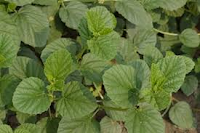 |
| Damiana leaf tea kashmir |
Damiana leaf is said to help enhance sexual health and treat a vast array of symptoms from diabetes to anxiety. But there isn't much more than anecdotal evidence to support these claims. Damiana, also known as Turnera diffusa, is a low-growing plant with yellow flowers and fragrant leaves.
A general guide is to take 2 to 4 grams (g) or less of dried damiana in tea form with meals, three times a day. Individual experiences will vary, but hallucinations have been reported at doses of 200 g.
Availability : Medicine/Seed & Plants
WhatsApp: 9858986794
Ph: 01933-223705
e-mail: jkmpic@gmail.com
How long does it take for damiana to work,
Damiana benefits for female,
Damiana benefits for male,
How long does it take for damiana to work for male,
How long does it take for damiana to work for female,
Damiana benefits for hair growth,
Damiana for men,Damiana leaf benefits,
Damiana tea,
Benefits of damiana tea,

















